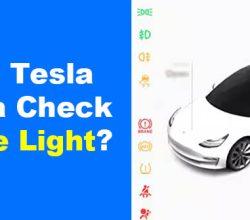When it comes to understanding a vehicle’s powertrain, there are two essential components: the engine and the transmission. While these two parts work in harmony to provide power to the wheels, many people often wonder if the transmission is part of the engine or a separate component.
The answer is not as simple as one may assume, and this article aims to delve into the topic and provide a detailed explanation.
The Engine: Power Generation
The engine is responsible for generating power by converting fuel into kinetic energy. It achieves this by igniting fuel in the cylinders, causing pistons to move and drive the crankshaft. The rotation of the crankshaft then powers the vehicle’s wheels through a series of gears.
The transmission: Power Distribution
The transmission’s primary role is to control the distribution of power from the engine to the wheels. It consists of a series of gears that alter the speed and torque of the engine’s output, allowing the vehicle to accelerate, decelerate, and maintain a consistent speed. The transmission also permits the driver to change gears manually, allowing for greater control over the vehicle’s performance.
Transmission and Engine Working Together
While the engine and transmission have different functions, they must work together to provide the necessary power to move the vehicle. The engine generates power and sends it to the transmission, which then distributes that power to the wheels. This process occurs seamlessly, with the transmission altering the power’s speed and torque to suit the vehicle’s speed and driving conditions.
Transmission and Engine as Separate Components
Despite the transmission and engine working together, they are separate components with distinct functions. The engine generates power, while the transmission controls the power’s distribution. This distinction is evident in the physical layout of the vehicle’s powertrain. The engine sits in the front of the vehicle, while the transmission is often located underneath the vehicle.
Also check: Can bad gas cause check engine light to come on?
Components of the Transmission
To understand why the transmission is not part of the engine, it’s essential to understand the components that make up the transmission. These components include:
Gearbox:
The gearbox contains a series of gears that transmit power from the engine to the wheels. The gearbox alters the speed and torque of the engine’s output, allowing the vehicle to accelerate, decelerate, and maintain a consistent speed.
Clutch:
The clutch is the mechanism that connects and disconnects the engine from the gearbox. When the clutch is engaged, power is transmitted from the engine to the gearbox. When the clutch is disengaged, power is not transmitted, allowing the driver to change gears.
Shafts:
Shafts connect the various components of the transmission, allowing power to be transmitted from the engine to the wheels.
Differential:
The differential is a component that allows the wheels to rotate at different speeds. This is necessary when the vehicle is turning, as the outside wheels must travel a greater distance than the inside wheels.
Also check: Is it bad to rev your engine?
Conclusion
In conclusion, while the engine and transmission work together to provide power to the vehicle, they are separate components with distinct functions. The engine generates power, while the transmission controls the power’s distribution to the wheels.
This is evident in the physical layout of the vehicle’s powertrain, with the engine located in the front of the vehicle and the transmission often located underneath. Therefore, the transmission is not part of the engine, but rather a separate component that plays a vital role in a vehicle’s powertrain.



